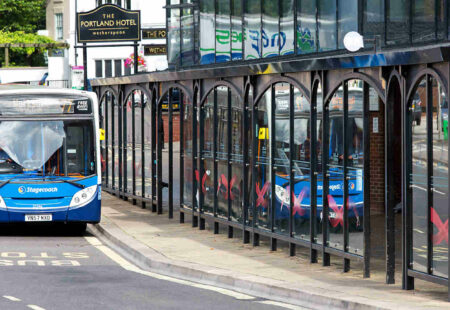New guidance launched by Government to help get Brits safely back to work
Practical guidelines have been published to make workplaces as safe as possible and give people confidence to go back to work during the coronavirus pandemic.
Documents have been developed in consultation with approximately 250 businesses, unions and industry leaders, as well as devolved administrations.
Up to an extra £14 million has been made available for the Health and Safety Executive (HSE) for extra call centre employees, inspectors and equipment guidance provides employers with a downloadable notice that businesses should display to show people they have followed the guidance.
New ‘COVID-19 secure’ guidelines are available to UK employers to help them get their businesses back up and running and workplaces operating as safely as possible. Read the guidance for businesses
This follows the Prime Minister setting out steps to beat the virus and restart the economy, so we can protect jobs, restore people’s livelihoods and fund the country’s vital public services.
The government has consulted approximately 250 stakeholders in preparing the guidance. It has been developed with input from firms, unions, industry bodies and the devolved administrations in Northern Ireland, Scotland and Wales and in consultation with Public Health England (PHE) and the Health and Safety Executive (HSE), to develop best practice on the safest ways of working across the economy, providing people with the confidence they need to return to work.
The new guidance covers 8 workplace settings which are allowed to be open, from outdoor environments and construction sites to factories and takeaways.
This sets out practical steps for businesses focused on 5 key points, which should be implemented as soon as it is practical:
1. Work from home, if you can
All reasonable steps should be taken by employers to help people work from home. But for those who cannot work from home and whose workplace has not been told to close, our message is clear: you should go to work. Staff should speak to their employer about when their workplace will open.
2. Carry out a COVID-19 risk assessment, in consultation with workers or trade unions
This guidance operates within current health and safety employment and equalities legislation and employers will need to carry out COVID-19 risk assessments in consultation with their workers or trade unions, to establish what guidelines to put in place. If possible, employers should publish the results of their risk assessments on their website and we expect all businesses with over 50 employees to do so.
3. Maintain 2 metres social distancing, wherever possible
Employers should re-design workspaces to maintain 2 metre distances between people by staggering start times, creating one way walk-throughs, opening more entrances and exits, or changing seating layouts in break rooms.
4. Where people cannot be 2 metres apart, manage transmission risk
Employers should look into putting barriers in shared spaces, creating workplace shift patterns or fixed teams minimising the number of people in contact with one another, or ensuring colleagues are facing away from each other.
5. Reinforcing cleaning processes
Workplaces should be cleaned more frequently, paying close attention to high-contact objects like door handles and keyboards. Employers should provide handwashing facilities or hand sanitisers at entry and exit points.
A downloadable notice is included in the documents, which employers should display in their workplaces to show their employees, customers and other visitors to their workplace, that they have followed this guidance.
Business Secretary Alok Sharma said: “This guidance provides a framework to get the UK back to work in a way that is safe for everyone. These are practical steps to enable employers to identify risks that COVID-19 creates and to take pragmatic measures to mitigate them. And as we are able to reopen new sectors of the economy, we will continue our collaborative approach working with a wide range of stakeholders, to provide guidance for additional workplaces.”
Sarah Albon Chief Executive, Health and Safety Executive said “The BEIS guidance issued today sets out practical steps employers can take to enable staff to continue and return to work. We have worked with BEIS to ensure businesses have access to the information they need to put in place measures to help them work safely. This will assist employers in carrying out risk assessments and putting practical measures in place.
At the heart of the return to work is controlling the risk posed by the virus. Ensuring safe working practices are in place will help deliver a safe return to work and support businesses across the country.”
Craig Beaumont, Director of External Affairs and Advocacy at the Federation of Small Businesses commented: “FSB has engaged through this process with the Department for Business, Energy and Industrial Strategy and we appreciate that our points have been taken on board for the UK small business community. Today’s guidance is practical, workable and proportionate for small businesses. It will be a long journey but this guidance will provide the basis for small employers to have the positive conversations needed with their staff. This is the first step to getting the economy back on its feet.”
Carolyn Fairbairn, Director-General of the CBI commented: “Safety is at the heart of business thinking. Unless people feel safe, employees won’t return, customers will stay away and the restart will falter, harming livelihoods and public services. This guidance will help. It gives firms a clearer picture of how to reopen safely and gradually. The guidance builds on the good proactive plans many firms have developed during lockdown. Excellent employee engagement, fast workplace innovation and transparency have helped many companies support livelihoods. It’s right to build on this.
The UK faces months of change and challenge. These guidelines will need to continue to evolve based on insight from the ground.
And employers, employee representatives and relevant enforcement agencies must work together, supporting these plans to build public trust and get our economy back on its feet.”
Jonathan Geldart, Director General of the Institute of Directors commented: “This guidance is an important first step. It won’t provide every answer, no guidance can, but directors can use it to inform their risk assessments for operating in this pandemic.
Ultimately, the decision lies with a company’s directors, and they need to feel comfortable they can operate safely. Decisions on re-opening will not be taken lightly. Business leaders want to stand on their own two feet, but most can’t operate at anything like normal capacity at the moment, and making adjustments to protect staff and customers will be a big challenge for many workplaces.
We hope and expect the guidance to evolve over time, but this is a place for employers to start on the long path to getting the economy going again.
The guidance applies to businesses currently open. This also includes guidance for shops which we believe may be in a position to begin a phased reopening at the earliest from the 1 June. Guidance for other sectors that are not currently open will be developed and published ahead of those establishments opening to give those businesses time to plan. The government will also shortly set up taskforces to work with these sectors to develop safe ways for them to open at the earliest point at which it is safe to do so, as well as pilot re-openings to test businesses’ ability to adopt the guidelines.”
As part of the announcement, the government has made available up to an extra £14 million for the HSE, equivalent to an increase of 10% of their budget, for extra call centre employees, inspectors and equipment if needed.
For further business support information please visit our Coronavirus Business Support Page




